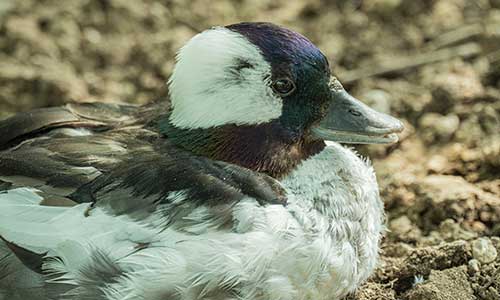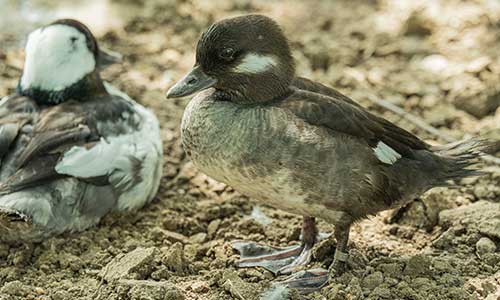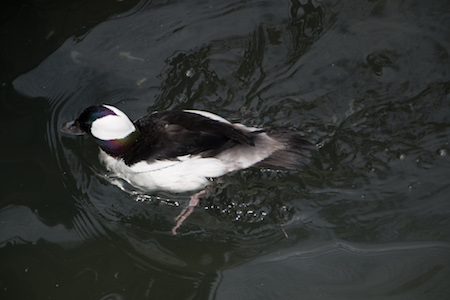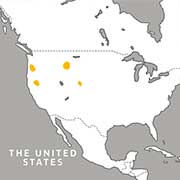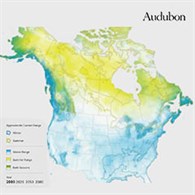Appearance:
Named for the rounded shape of their heads, buffleheads are one of the smallest breeds of duck in North America. Males are generally larger than females, and are more brightly colored in black, white, and iridescent purple and green on their face. Females are more muted in color, being mostly gray. All buffleheads have white patches behind their eyes.
Size:
- Weight: 13 ounces
- Length: 14 inches
Diet:
Aquatic invertebrates, crustaceans, mollusks, insect larvae, snails, clams and seeds.
Reproduction:
These monogamous birds typically breed in late winter or spring. Buffleheads use nests constructed by other species. They typically look for hollowed out cavities in trees close to a body of water. Nests remain fairly minimal, as buffleheads do not add additional materials. Females have been known to scout out nest locations far in advance. After an incubation period of 30 days, they lay anywhere from 4-17 cream-colored or buff eggs.
Behavior:
Buffleheads spend most of their time in water preening, swimming, diving or foraging. They seldom walk on land, however adults without nests may sleep on the shoreline. They're often found in small flocks upwards of 10 individuals.
Range/Habitat:
North American ponds or lakes. They spend winters in lakes, estuaries or salt bays.
Threats:
Bufflehead are losing nest sites as loggers clear-cut boreal forest, and as agricultural fields replace aspen parklands in western North America.
How you can help:
Putting up nest boxes with small (2.5-inch diameter) openings in appropriate habitat can help. Download a construction plan for a bufflehead nestbox.

